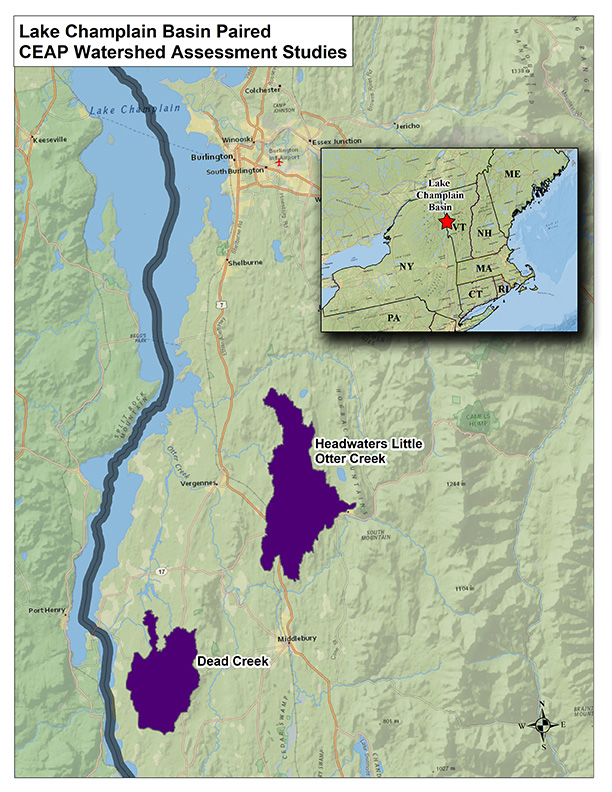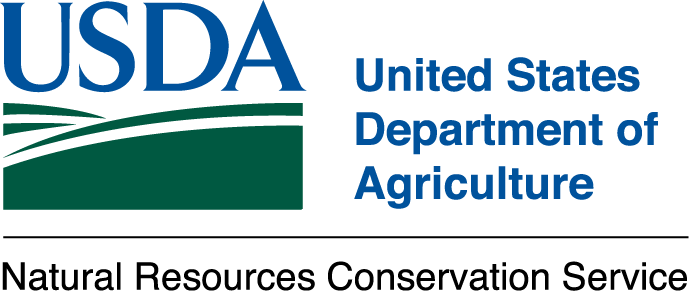
USDA Natural Resources Conservation Service – Vermont
Mission
The USDA Natural Resources Conservation Service (NRCS) is committed to working with farmers in Lake Champlain’s watersheds where water quality is most impaired. NRCS is helping farmers plan and implement conservation practices which will help meet the required phosphorus reduction goals for Lake Champlain. Through the Vermont Agricultural Water Quality Partnership (VAWQP), NRCS seeks to accelerate improved water quality in the Lake Champlain Basin by working with partners to provide outreach, education, and technical and financial assistance to farmers.
Agency Initiatives
Conservation Technical and Financial Assistance
NRCS works with farmers to protect and improve soil and water quality through its flagship program, the Environmental Quality Incentives Program (EQIP). This voluntary approach to conservation provides financial and technical assistance for planning and implementing conservation practices on privately owned lands. In 2019, farmers and landowners in Vermont worked with NRCS to improve and protect 105,737 acres with a variety of conservation practices and programs. A total of $20.2 million was allocated through Farm Bill conservation and easement programs to Vermont farmers and landowners in 2019.
Strategic Watershed Planning for Improved Water Quality
Vermont NRCS spearheaded a multi-agency steering committee to implement a strategic and coordinated approach to target watersheds with the heaviest concentrations of agricultural phosphorus runoff to Lake Champlain. This approach targeted 50 percent of all water quality funding in EQIP to high priority watersheds with the goal of developing and implementing conservation plans to reach measurable water quality results over a five-year period. Six target watersheds were selected based on elevated phosphorus levels and community interest; McKenzie Brook, St. Albans Bay, Rock River, Pike River/Lake Carmi, East Creek, and Hungerford Brook. In 2019, state and federal commitment to water quality resulted in 15.89 metric tons of phosphorus load reduction with agriculture contributing 97% of total phosphorus reduction.
Current Projects
Conservation Effects Assessment Project (CEAP) — Watershed Assessments

This study will quantify the outcomes of conservation practices on water quality in two Lake Champlain Basin watersheds—the Dead Creek Watershed and Headwaters of Little Otter Creek. The study will provide insight into the potential for innovative conservation practices and planning tools to be used together to reduce agricultural sources of phosphorus, nitrogen, and sediment in streams.
Other Federal Agencies Involved: United States Geological Survey (USGS); USDA’s Agricultural Research Service.
Learn about USDA water quality study in Vermont portion of the Lake Champlain Basin
Source Water Protection in Vermont targets two high priority watersheds

In the fall of 2019, in collaboration with drinking water partners and the members of the USDA State Technical Committee, VT NRCS identified two priority areas for source water protection and is working to reduce nonpoint sources of nutrients, sediment, and pathogens related to agriculture in these priority watersheds. NRCS’ National Water Quality Initiative (NWQI) collaborates with the Environmental Protection Agency (EPA) and state water quality agencies for source water protection of both surface and groundwater public water systems. Agricultural producers within the Headwaters Passumpsic River watershed in the northeastern part of the state and the Vernon Dam watershed in the southern part of the state, both in the Connecticut River Watershed, are eligible to receive up to a 90% EQIP payment (higher than normal) for voluntary implementation of conservation practices.
Other Federal Agencies Involved: USDA-NRCS and EPA
Learn more about the USDA National Water Quality Initiative
